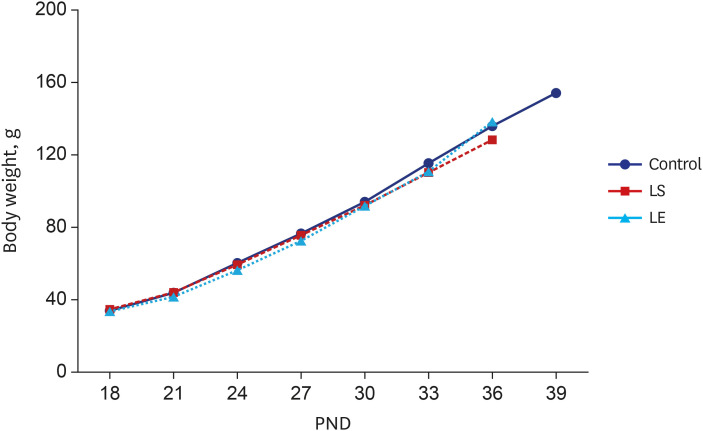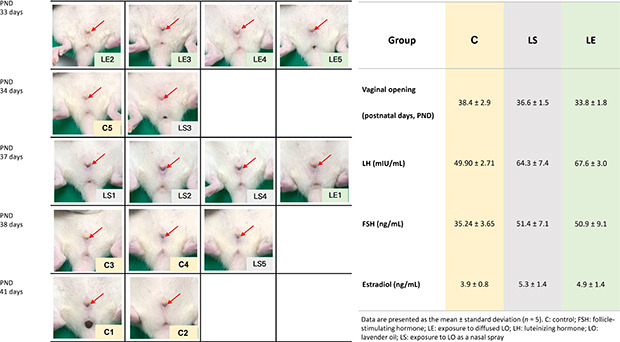1. Phillip M, Lazar L. Precocious puberty: growth and genetics. Horm Res. 2005; 64(Suppl 2):56–61. PMID:
16286772.

2. Fuqua JS. Treatment and outcomes of precocious puberty: an update. J Clin Endocrinol Metab. 2013; 98(6):2198–2207. PMID:
23515450.

3. Carel JC, Léger J. Clinical practice. Precocious puberty. N Engl J Med. 2008; 358(22):2366–2377. PMID:
18509122.
4. Ab Rahim SN, Omar J, Tuan Ismail TS. Gonadotropin-releasing hormone stimulation test and diagnostic cutoff in precocious puberty: a mini review. Ann Pediatr Endocrinol Metab. 2020; 25(3):152–155. PMID:
32871650.

5. Kim MS, Koh HJ, Lee GY, Kang DH, Kim SY. Comparing adult height gain and menarcheal age between girls with central precocious puberty treated with gonadotropin-releasing hormone agonist alone and those treated with combined growth hormone therapy. Ann Pediatr Endocrinol Metab. 2019; 24(2):116–123. PMID:
31261476.

6. Cho AY, Ko SY, Lee JH, Kim EY. Relationship between final adult height and birth weight after gonadotropin-releasing hormone agonist treatment in girls with central precocious puberty. Ann Pediatr Endocrinol Metab. 2020; 25(1):24–30. PMID:
32252213.

7. Lee JE, Jung HW, Lee YJ, Lee YA. Early-life exposure to endocrine-disrupting chemicals and pubertal development in girls. Ann Pediatr Endocrinol Metab. 2019; 24(2):78–91. PMID:
31261471.

8. Abreu AP, Kaiser UB. Pubertal development and regulation. Lancet Diabetes Endocrinol. 2016; 4(3):254–264. PMID:
26852256.

9. Yang R, Wang YM, Zhang L, Zhao ZM, Zhao J, Peng SQ. Prepubertal exposure to an oestrogenic mycotoxin zearalenone induces central precocious puberty in immature female rats through the mechanism of premature activation of hypothalamic kisspeptin-GPR54 signaling. Mol Cell Endocrinol. 2016; 437:62–74. PMID:
27519634.

10. Kriszt R, Winkler Z, Polyák Á, Kuti D, Molnár C, Hrabovszky E, et al. Xenoestrogens ethinyl estradiol and zearalenone cause precocious puberty in female rats via central kisspeptin signaling. Endocrinology. 2015; 156(11):3996–4007. PMID:
26248220.

11. Henley DV, Lipson N, Korach KS, Bloch CA. Prepubertal gynecomastia linked to lavender and tea tree oils. N Engl J Med. 2007; 356(5):479–485. PMID:
17267908.

12. Diaz A, Luque L, Badar Z, Kornic S, Danon M. Prepubertal gynecomastia and chronic lavender exposure: report of three cases. J Pediatr Endocrinol Metab. 2016; 29(1):103–107. PMID:
26353172.

13. Ramsey JT, Li Y, Arao Y, Naidu A, Coons LA, Diaz A, et al. Lavender products associated with premature thelarche and prepubertal gynecomastia: case reports and endocrine-disrupting chemical activities. J Clin Endocrinol Metab. 2019; 104(11):5393–5405. PMID:
31393563.

14. Linklater A, Hewitt JK. Premature thelarche in the setting of high lavender oil exposure. J Paediatr Child Health. 2015; 51(2):235. PMID:
25677490.

15. Kentner AC, Scalia S, Shin J, Migliore MM, Rondón-Ortiz AN. Targeted sensory enrichment interventions protect against behavioral and neuroendocrine consequences of early life stress. Psychoneuroendocrinology. 2018; 98:74–85. PMID:
30121011.

16. Valussi M, Antonelli M, Donelli D, Firenzuoli F. Appropriate use of essential oils and their components in the management of upper respiratory tract symptoms in patients with COVID-19. J Herb Med. 2021; 28:100451. PMID:
33816085.

17. Silva JKRD, Figueiredo PLB, Byler KG, Setzer WN. Essential oils as antiviral agents. Potential of essential oils to treat SARS-CoV-2 infection: an in-silico investigation. Int J Mol Sci. 2020; 21(10):3426.
18. Wilkin PJ, Al-Yozbaki M, George A, Gupta GK, Wilson CM. The undiscovered potential of essential oils for treating SARS-CoV-2 (COVID-19). Curr Pharm Des. 2020; 26(41):5261–5277. PMID:
33059564.

19. Beckman DA, Feuston M. Landmarks in the development of the female reproductive system. Birth Defects Res B Dev Reprod Toxicol. 2003; 68(2):137–143. PMID:
12866705.

20. Beck MJ, Padgett EL, Bowman CJ, Wilson DT, Kaufman LE, Varsho BJ, et al. Nonclinical juvenile toxicity testing. Hood R, editor. Developmental and Reproductive Toxicity: a Practical Approach. 2nd ed. Boca Raton, FL, USA: Taylor & Francis Group;2006. p. 308–309.
21. Rivest RW. Sexual maturation in female rats: hereditary, developmental and environmental aspects. Experientia. 1991; 47(10):1027–1038. PMID:
1936201.

22. Houk CP, Kunselman AR, Lee PA. Adequacy of a single unstimulated luteinizing hormone level to diagnose central precocious puberty in girls. Pediatrics. 2009; 123(6):e1059–e1063. PMID:
19482738.

23. Sehested A, Juul AA, Andersson AM, Petersen JH, Jensen TK, Müller J, et al. Serum inhibin A and inhibin B in healthy prepubertal, pubertal, and adolescent girls and adult women: relation to age, stage of puberty, menstrual cycle, follicle-stimulating hormone, luteinizing hormone, and estradiol levels. J Clin Endocrinol Metab. 2000; 85(4):1634–1640. PMID:
10770209.

24. Sims EK, Addo OY, Gollenberg AL, Himes JH, Hediger ML, Lee PA. Inhibin B and luteinizing hormone levels in girls aged 6–11 years from NHANES III, 1988–1994. Clin Endocrinol (Oxf). 2012; 77(4):555–563. PMID:
22443272.
25. DiVall SA, Radovick S. Pubertal development and menarche. Ann N Y Acad Sci. 2008; 1135(1):19–28. PMID:
18574204.

26. Partsch CJ, Sippell WG. Pathogenesis and epidemiology of precocious puberty. Effects of exogenous oestrogens. Hum Reprod Update. 2001; 7(3):292–302. PMID:
11392376.

27. Eugster EA. Update on precocious puberty in girls. J Pediatr Adolesc Gynecol. 2019; 32(5):455–459. PMID:
31158483.

28. Salehi-Pourmehr H, Ostadrahimi A, Ebrahimpour-Mirzarezaei M, Farshbaf-Khalili A. Does aromatherapy with lavender affect physical and psychological symptoms of menopausal women? A systematic review and meta-analysis. Complement Ther Clin Pract. 2020; 39:101150. PMID:
32379682.

29. Bakhtiari S, Paki S, Khalili A, Baradaranfard F, Mosleh S, Jokar M. Effect of lavender aromatherapy through inhalation on quality of life among postmenopausal women covered by a governmental health center in Isfahan, Iran: a single-blind clinical trial. Complement Ther Clin Pract. 2019; 34:46–50. PMID:
30712745.

30. Shinohara K, Doi H, Kumagai C, Sawano E, Tarumi W. Effects of essential oil exposure on salivary estrogen concentration in perimenopausal women. Neuroendocrinol Lett. 2017; 37(8):567–572. PMID:
28326753.
31. Politano VT, McGinty D, Lewis EM, Hoberman AM, Christian MS, Diener RM, et al. Uterotrophic assay of percutaneous lavender oil in immature female rats. Int J Toxicol. 2013; 32(2):123–129. PMID:
23358464.

32. Aboutaleb N, Jamali H, Abolhasani M, Pazoki Toroudi H. Lavender oil (
Lavandula angustifolia) attenuates renal ischemia/reperfusion injury in rats through suppression of inflammation, oxidative stress and apoptosis. Biomed Pharmacother. 2019; 110:9–19. PMID:
30453254.
33. Bradley BF, Brown SL, Chu S, Lea RW. Effects of orally administered lavender essential oil on responses to anxiety-provoking film clips. Hum Psychopharmacol. 2009; 24(4):319–330. PMID:
19382124.

34. Donelli D, Antonelli M, Bellinazzi C, Gensini GF, Firenzuoli F. Effects of lavender on anxiety: a systematic review and meta-analysis. Phytomedicine. 2019; 65:153099. PMID:
31655395.

35. Karan NB. Influence of lavender oil inhalation on vital signs and anxiety: a randomized clinical trial. Physiol Behav. 2019; 211:112676. PMID:
31505191.

36. Hawkins J, Hires C, Dunne E, Baker C. The relationship between lavender and tea tree essential oils and pediatric endocrine disorders: a systematic review of the literature. Complement Ther Med. 2020; 49:102288. PMID:
32147050.











 PDF
PDF Citation
Citation Print
Print




 XML Download
XML Download